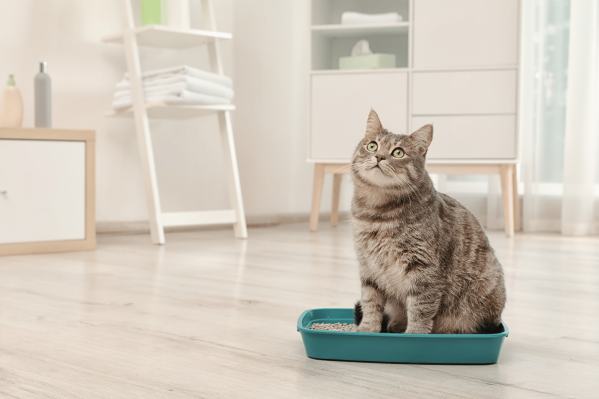Whether you’re dealing with a loved one or family pet, the words “kidney failure” can sound alarming. Kidneys are vital to help flush out toxins in the body and help restore the body’s fluid balance, and it’s no different for your cat.
However, in cats, kidney failure is much more common and can have serious effects on their quality of life. California veterinarian Dr. Rachel Mar points out that chronic kidney disease can be difficult to notice in cats, but routine trips to the vet can help make a difference in catching it early. If you’re concerned about this happening to your cat, there are a few things you can do to watch out for kidney failure, tend to your cat after a diagnosis, and increase your cat’s quality of life and extend their lifespan after being diagnosed. Here’s everything you need to know about kidney failure in cats.
What causes kidney failure in cats?
The two main causes of kidney failure in cats include acute kidney failure and chronic kidney disease.
Acute kidney failure in cats
Acute kidney injury or failure in cats is classified as the sudden failure of kidneys. “Acute kidney injury (AKI) tends to occur in younger dogs and cats and occurs when there is an abrupt decline in how the kidneys filter waste and maintain normal fluid balance,” says Dr. Mar. “This is normally due to nephrotoxicity (toxins to kidney directly), infections, or after a kidney injury.”
Chronic kidney failure in cats
Chronic kidney disease (CKD) is described as abnormal kidney structure or function which has lasted over three months,” says Dr. Mar. CKD is most commonly diagnosed in older cats. “When diagnosed, we use a system called IRIS (International Renal Interest Society) staging to stage the severity of a patient’s kidney failure,” she says. “This staging is based on the presence of symptoms and values found on bloodwork which are correlated to the kidneys (such as creatinine and blood urea nitrogen [BUN]).”
Signs of kidney failure in cats
Unfortunately, CKD may be difficult to notice in cats since they do not typically show signs of any illness until the illness is severe and developed. However, some signs and symptoms of kidney failure in cats may include:
Polyuria (increased urination)
Polydipsia (increased drinking)
Anorexia
Weight loss
Lethargy
Vomiting
Bad breath
Poor coat or body condition
Treatments for kidney failure in cats
Treating kidney failure in cats at the vet can be extremely costly and unfortunately, there are no surgical treatments that can reverse kidney damage once it has occurred. “Some specialty clinics offer kidney transplantation but this is rarely performed due to cost. Hemodialysis is the other option which is also costly,” says Dr. Mar.
However, Dr. Mar notes that cats with kidney disease can be stabilized well with consistent treatment. “Depending on how sick the cat is when they arrive at the vet, they may need immediate treatment in a clinic, which would include fluid therapy, antiemetics, antacids and/or appetite stimulants,” says Dr. Mar. She says cases that come in typically need to be monitored overnight and only be sent home once the cat begins eating normally and appears to be less lethargic.
“In very severe cases patients may need a blood transfusion if they are anemic,” says Dr. Mar. She points out that even after being discharged from the hospital, cats with kidney disease will need to see a vet every three months to check blood work and vitals and test urine samples.
At-home treatments & medication management
Once your cat is diagnosed with kidney failure, you will need to make dietary changes at home. “Cats should be transitioned to a kidney specific prescription diet which will have higher protein and limited phosphorus,” says Dr. Mar. Your vet may also suggest weekly subcutaneous fluid therapy and supplements if they are experiencing vomiting and nausea at home, “Cats may still have bouts of vomiting at home and this can be controlled with daily administration with nausea (antiemetic) medication and/or antacids as prescribed by your vet,” says Dr. Mar. “Pain medication is not needed once discharged from the hospital since patients are feeling better.”
Dr. Mar is hopeful that cats diagnosed with kidney failure can be maintained at home and still live for many years, as survival time is dependent on the stage of the disease. “The main goal of care for cats with kidney failure is to improve the quality of life and slow the progression of disease,” she says. “Therefore, a cat's prognosis with kidney disease is based on the owner’s ability and willingness to provide daily care at home for their cat, as well as the stage of disease.”
How to prevent kidney failure in cats
There is still so much that veterinarians don’t understand about kidney disease, though it is thought to be caused by a genetic predisposition.
“The best ‘prevention’ is therefore early diagnosis as this will provide the best outcome and longer survival time for patients,” says Dr. Mar. She says the best thing you can do for your cat’s health is to routinely bring them in for annual exams. Additionally, once cats are 7 or 8 years old, she suggests they are seen by a vet every six months. Routine lab work can help vets catch diseases in their early stages. “And of course, if your cat starts acting differently in any way, or shows any of the signs mentioned, it is definitely warranted to bring them into the vet,” says Dr. Mar.
